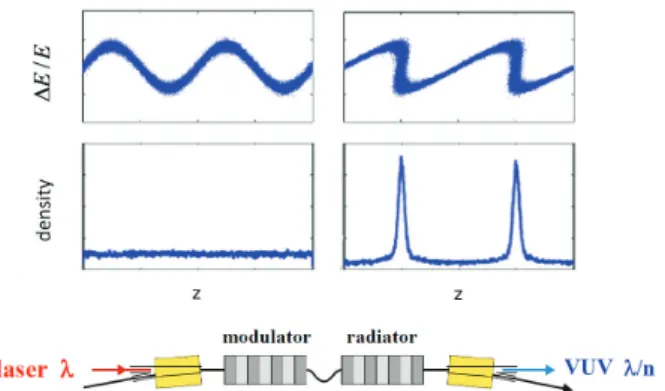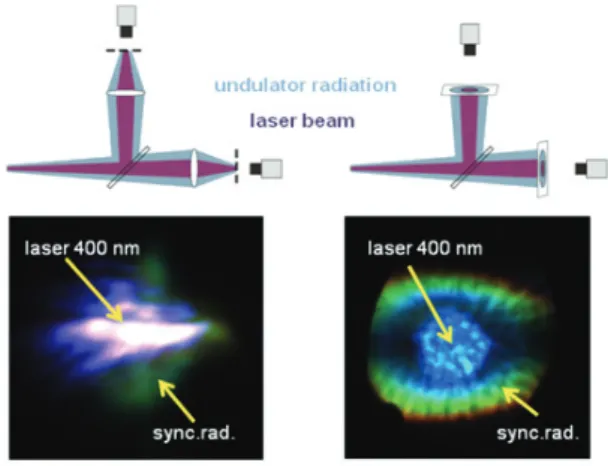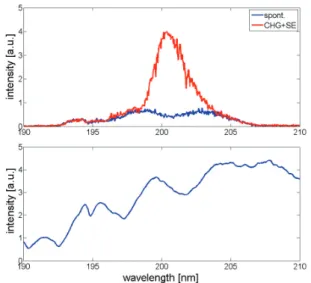STATUS OF THE DELTA SHORT-PULSE FACILITY ∗
H. Huck
†,
M. Bakr, M. H¨oner, S. Khan, R. Molo, A. Nowaczyk, A. Schick, P. Ungelenk, M. Zeinalzadeh, Center for Synchrotron Radiation (DELTA), TU Dortmund University, 44221 Dortmund, Germany
Abstract
Since 2011, a new Coherent Harmonic Generation (CHG) source is under commissioning at the 1.5-GeV stor- age ring DELTA. Following first experiments using the fun- damental wavelength of a Ti:sapphire laser to modulate the electron energy in a small slice of the electron bunches, 400 nm pulses from a second-harmonic conversion unit are used since early 2012. With the radiator tuned to the second harmonic thereof, 200 nm CHG pulses are routinely ob- served. In order to detect higher harmonics and to proceed to a seed wavelength of 266 nm, an evacuated diagnostics beamline is under construction. Additionally, an existing VUV beamline is being upgraded to allow for the detec- tion of the CHG pulses and their utilization in pump-probe experiments. Furthermore, a dedicated THz beamline pro- vides valuable information about the laser-induced energy modulation of the electrons. In this paper, the status of the project and technical details will be presented.
INTRODUCTION
At free-electron lasers (FELs) based on linear acceler- ators, good progress is being made in generating ultra- short radiation pulses in the VUV and X-ray regime in or- der to investigate atomic phenomena on the femtosecond timescale. The large fluctuations of arrival time and spec- tra of the pulses generated by SASE FELs can be effec- tively alleviated by seeding the FEL process with exter- nal laser pulses, or, most recently, with pulses generated by an upstream undulator [1]. It is nevertheless worth- while to develop methods to generate ultrashort pulses at conventional synchrotron radiation sources, given the large number of existing facilities and their well-established user communities. One method is Coherent Harmonic Genera- tion (CHG) [2, 3, 4].
The principle of CHG is illustrated in Fig. 1. The interac- tion between the electrons and a co-propagating laser pulse in a first undulator (the ”modulator”) causes a periodic en- ergy modulation within a small slice (typically 50 fs long) of the bunch. Tilting the phase-space distribution by means of a dispersive chicane results in microbunches, which ra- diate coherently at harmonics of the laser wavelength in a second undulator, the ”radiator”. Typically, the radia- tor can be tuned to provide ultrashort pulses with reason- able intensity up to the 5th harmonic. Doubling or tripling the frequency of the external laser pulse through nonlinear
∗Work supported by DFG (INST 212/236-1 FUGG), BMBF (05K10PE1, 05K10PEB), and the Federal State NRW
†holger.huck@tu-dortmund.de



